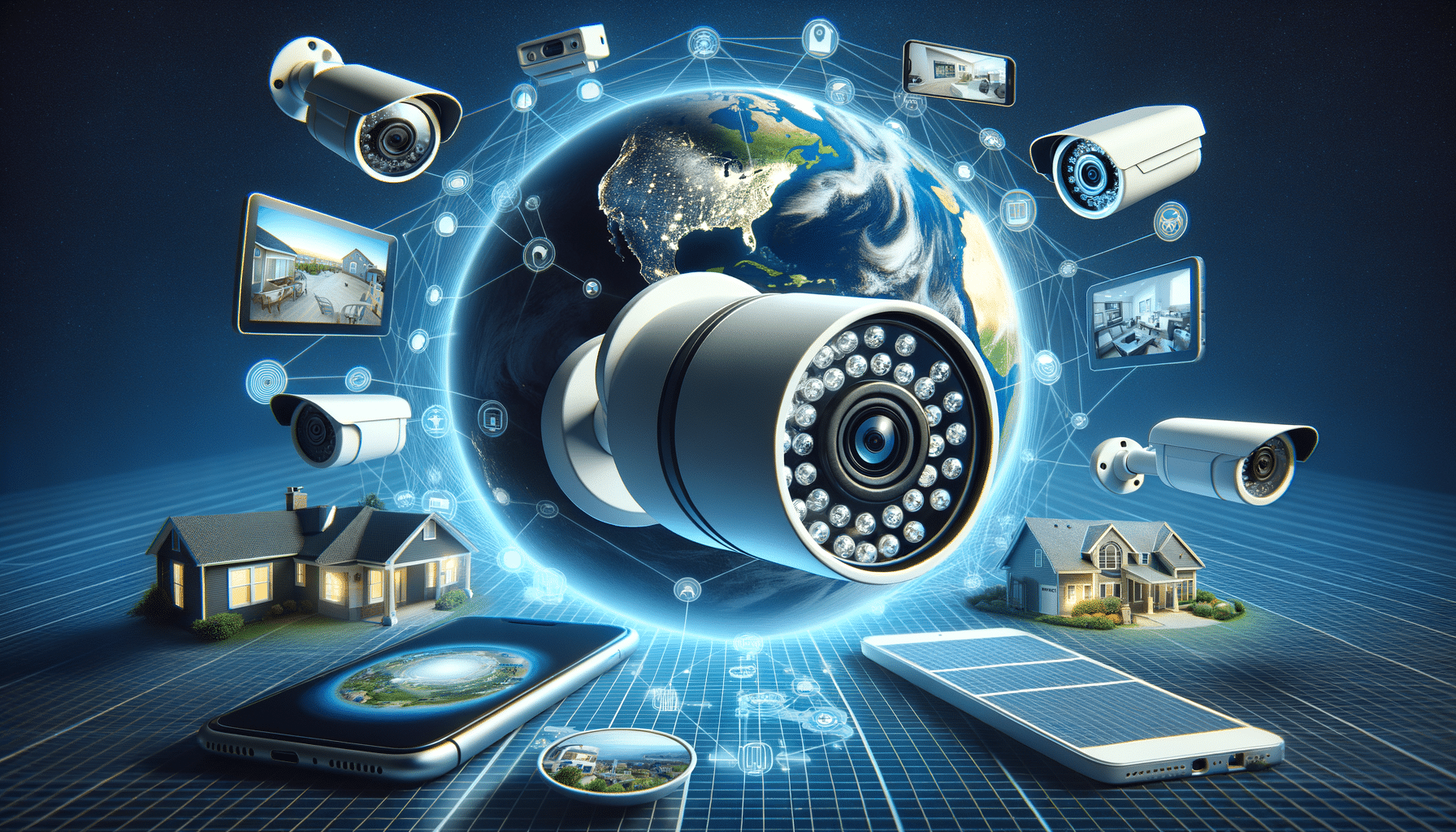
Amazing Home Security Cameras in the U.S
Understanding Home Security Cameras
Home security cameras have become an integral part of modern home safety systems. They offer peace of mind by allowing homeowners to monitor their property, deter potential intruders, and gather evidence in case of an incident. These cameras come in various types and functionalities, each designed to cater to different security needs.
Primarily, home security cameras can be categorized into indoor and outdoor models. Indoor cameras are typically used to monitor the inside of a home, focusing on key areas like living rooms, hallways, or entrances. On the other hand, outdoor cameras are built to withstand weather conditions and are often equipped with features like night vision and motion detection to monitor the perimeter of a property.
Technological advancements have enhanced the capabilities of these cameras significantly. Many modern cameras offer high-definition video quality, cloud storage for video footage, and integration with smart home systems. This integration allows users to control their cameras through voice commands or smartphone apps, making it convenient to monitor their homes remotely.
Choosing the right home security camera involves considering factors like the area to be monitored, desired features, and budget. It’s essential to evaluate the specific needs of your home to select a camera that provides the most value and security.
How to View a Security Camera From Anywhere
One of the most appealing features of modern security cameras is the ability to view live footage from anywhere in the world. This capability is made possible through internet connectivity and mobile applications, which have transformed how we interact with home security systems.
To view security cameras remotely, the camera must be connected to a network, usually through Wi-Fi or a wired Ethernet connection. Once connected, the camera can stream live footage to a cloud-based platform, accessible via a smartphone app or web browser. This setup allows users to check in on their homes at any time, providing peace of mind whether they’re at work, on vacation, or simply running errands.
Most security camera manufacturers offer dedicated mobile apps that are compatible with iOS and Android devices. These apps provide a user-friendly interface to view live footage, receive alerts, and manage camera settings. Some advanced features may include two-way audio, allowing communication through the camera, and the ability to review recorded footage stored in the cloud.
It’s important to ensure that the internet connection at home is stable and secure to prevent unauthorized access to the camera feed. Regularly updating the camera’s firmware and using strong, unique passwords for the app and camera account are crucial steps in maintaining the security of your remote viewing setup.
Key Considerations Before Installing a Security Camera at Home
Installing a security camera system at home requires careful planning and consideration to ensure it meets your security needs effectively. Here are some key factors to consider before proceeding with installation:
- Location: Determine the areas that need monitoring, such as entry points, driveways, or backyards. Proper placement is crucial for capturing clear footage and maximizing coverage.
- Camera Type: Choose between wired and wireless cameras based on your preference and installation ease. Wireless cameras offer more flexibility in placement but may require regular battery changes, while wired cameras provide a stable connection but involve more complex installation.
- Features: Consider the features that are important to you, such as night vision, motion detection, and audio capabilities. These features can enhance the functionality of your security system.
- Privacy and Legal Considerations: Be aware of privacy laws and regulations in your area regarding surveillance. Ensure that your camera placement does not infringe on neighbors’ privacy or violate any legal restrictions.
- Budget: Security cameras come in a wide range of prices. Set a budget that aligns with your financial capacity while ensuring that the cameras you choose meet your security needs.
By taking these considerations into account, you can install a security camera system that effectively enhances the safety and security of your home.
Integrating Security Cameras With Smart Home Systems
Integrating security cameras with smart home systems offers a seamless and efficient way to manage home security. This integration allows homeowners to control and monitor their security cameras alongside other smart devices, such as lights, locks, and thermostats, through a single platform.
Smart home systems often support a variety of security cameras, enabling users to customize their security setup according to their preferences. Integration with voice assistants adds another layer of convenience, allowing users to control their cameras with simple voice commands.
For instance, users can set up automation rules where the security camera triggers outdoor lights to turn on when motion is detected at night. This not only enhances security but also improves energy efficiency by ensuring lights are only used when necessary.
Moreover, smart home integration can provide real-time alerts and notifications directly to a smartphone or smart device, keeping homeowners informed of any unusual activity. This immediate feedback is crucial for taking prompt action in case of a security breach.
When choosing a security camera for smart home integration, ensure compatibility with your existing smart home ecosystem. This will allow for smooth operation and the ability to leverage all the features of both the camera and the smart home system.
Maintaining Your Home Security Camera System
Once a home security camera system is installed, regular maintenance is essential to ensure its optimal performance and longevity. Proper upkeep can prevent technical issues and ensure that the system continues to provide reliable security coverage.
Here are some maintenance tips for keeping your security camera system in top condition:
- Regular Cleaning: Dust and debris can accumulate on camera lenses, affecting image quality. Regularly clean the lenses with a soft cloth to maintain clear footage.
- Software Updates: Keep the camera’s firmware and associated apps up to date. Manufacturers often release updates to improve performance and security features.
- Check Connections: Periodically inspect wired connections for any signs of wear or damage. Ensure that wireless cameras have a stable connection to the network.
- Test Functionality: Regularly test the camera system to ensure all features, such as motion detection and alerts, are working correctly. This can help identify and resolve issues before they become significant problems.
- Review Footage: Periodically review stored footage to ensure that the camera is capturing the necessary areas and that the video quality meets your expectations.
By following these maintenance practices, homeowners can ensure that their security camera system remains effective in protecting their property and loved ones.


